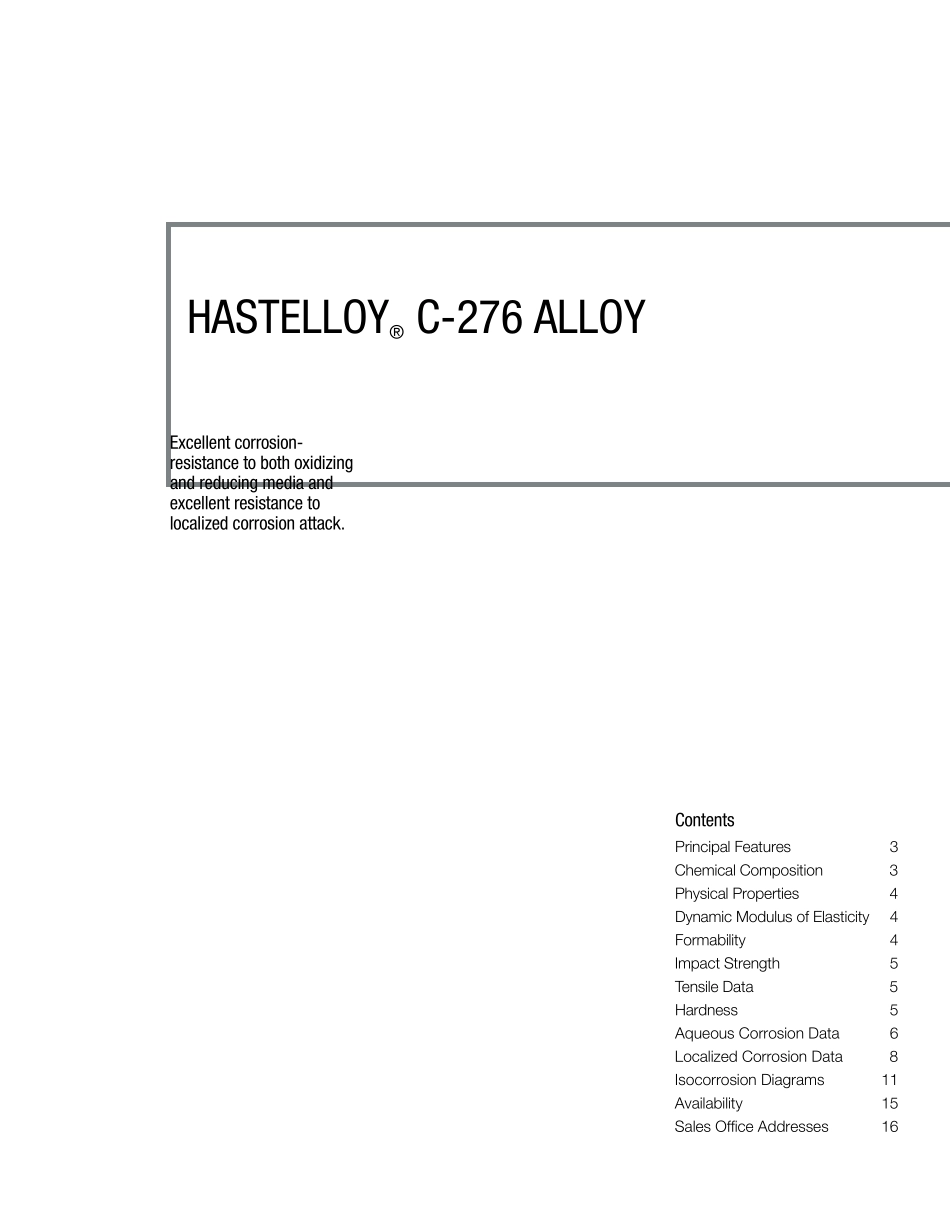HASTELLOY® C-276 ALLOYExcellent corrosion-resistance to both oxidizingand reducing media andexcellent resistance tolocalized corrosion attack.ContentsPrincipal Features3Chemical Composition3Physical Properties4Dynamic Modulus of Elasticity4Formability4Impact Strength5Tensile Data5Hardness5Aqueous Corrosion Data6Localized Corrosion Data8Isocorrosion Diagrams11Availability15Sales Office Addresses162In aggressive/corrosive service,when nothing else works, manyindustries have traditionally turnedto HASTELLOY® C-276 alloy.Many years of outstandingperformance in a variety ofindustrial applications haveconfirmed the advantages of usingthe alloy. Materials engineers in thechemical processing and otherindustries have grownaccustomed to specifying its highperformance based on laboratorytesting, field trials and/or priorexperience.Some “generic” alloy N10276products fail to measure up to theperformance industry expectsfrom HASTELLOY C-276 alloywhich is produced via exactingprocesses, and backed by yearsof experience in chemistry control,thermal-mechanical processing,testing and qualifications to rigidstandards.1 ASTM G-28A = 50% H2SO4 + 42g/l Fe2 (SO4)3 (Boiling)2 ASTM G-28B = 23% H2SO4 + 1.2% HCl + 1% Fe2Cl3 + 1% CuCl2 (Boiling)3 GREEN DEATH = 11.5% H2SO4 + 1.2% HCl + 1% Fe2Cl3 + 1% CuCl2 (Boiling)When the alloy is specified by the UNS Number, discerning questions should be asked for assurance of HASTELLOY C-276 alloyperformance:• Does the product possess the clean, homogeneous microstructure so important for good resistance to aqueouscorrosion?• How does the product perform in tough environments (e.g., rigorous pitting conditions) for which this material ismost often specified?• Is the corrosion resistance of the welded product, in a discriminating test, up...


